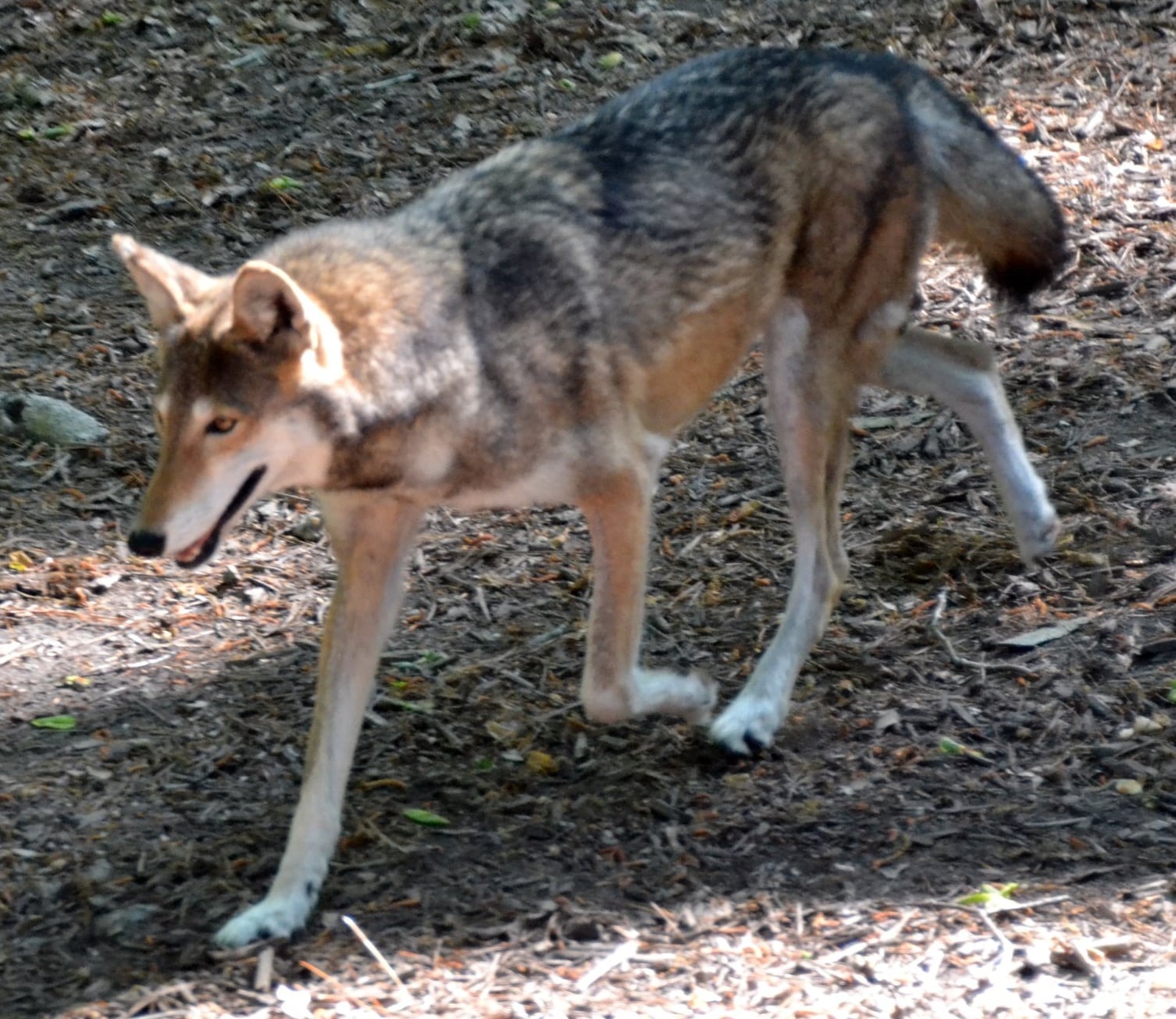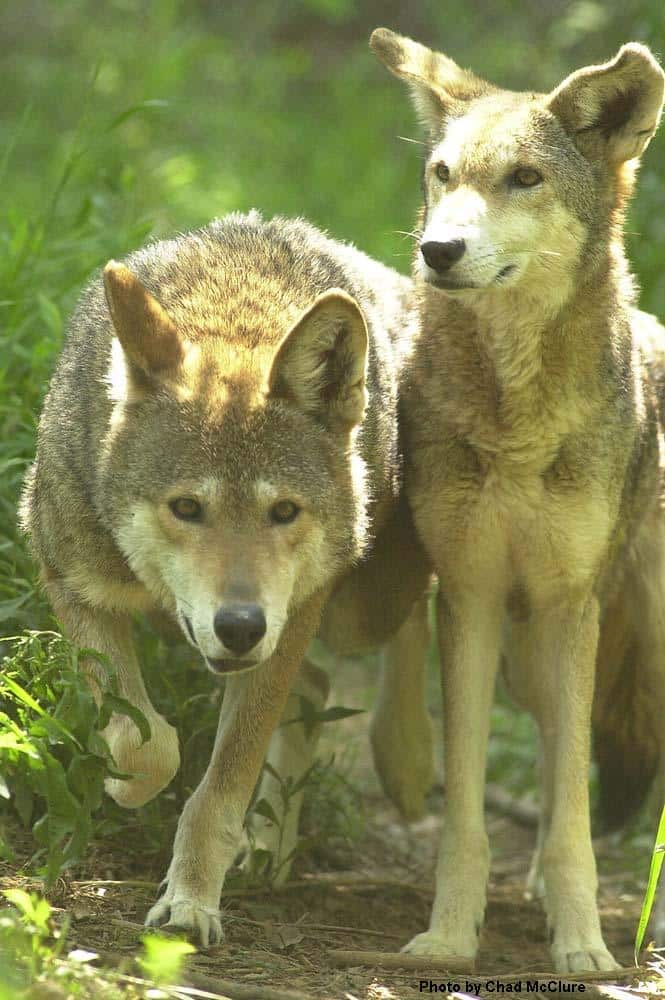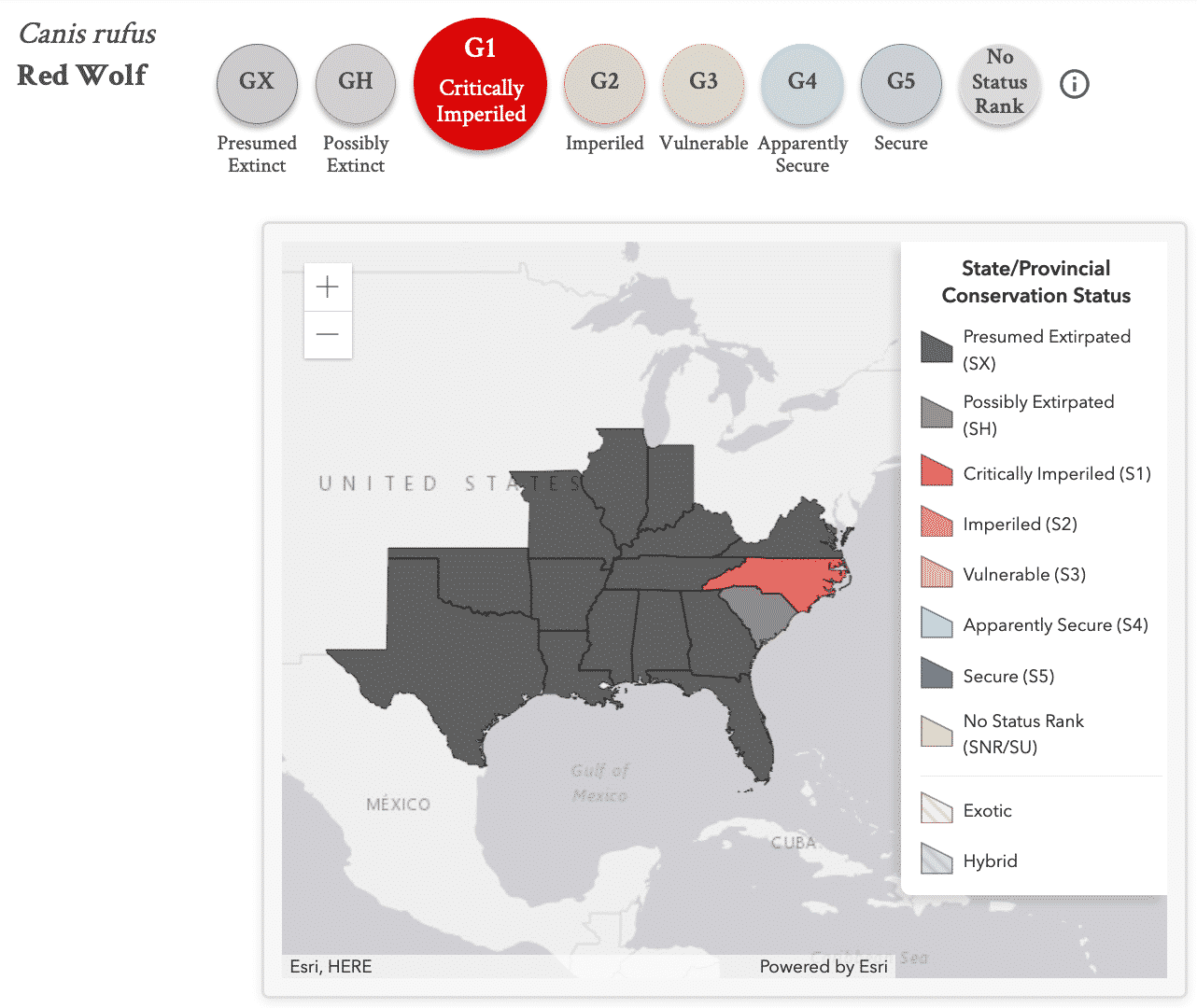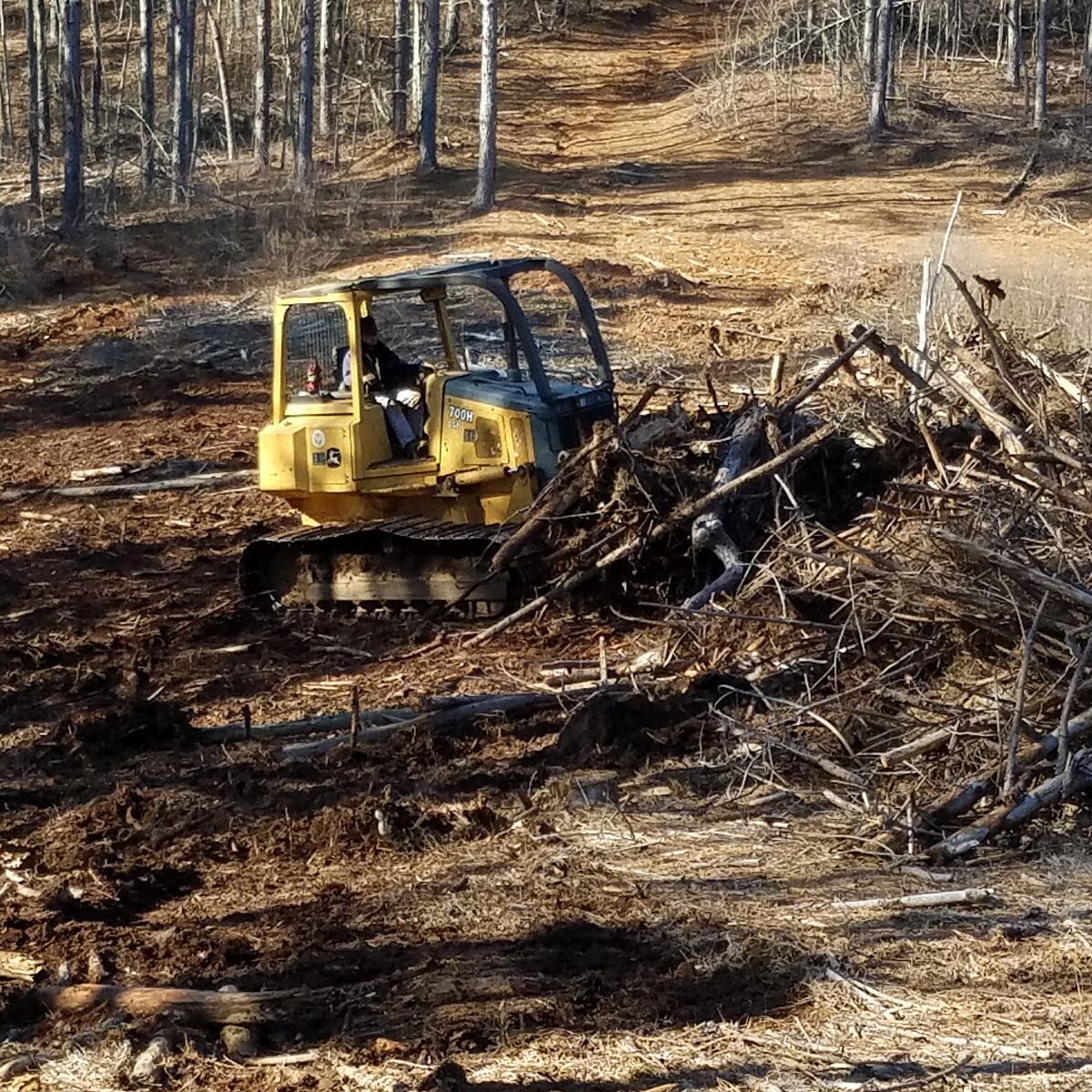Red Wolf
Canis rufus
Status: Critically Imperiled
Imagine the size of an adult coyote and a gray wolf, the Red Wolf would fall in between these two with an average weight of about 45 to 80 pounds. The red wolf has a buff (light brownish yellow color) color with a dark brown area on their back. These mammals often have reddish colored legs, ears, and head, which is where their common name comes from. This species of wolf is considered to be critically imperiled and only a few red wolves are still present in their native Eastern North Carolina region.


Habitat & Range
The red wolf used to occupy the Eastern and South Central United States in the mountains, lowland forests, and wetlands. Due to human impact and a changing habitat, these wolves are no longer found in these regions. Habitats in the southeastern United States that provide water, food, shelter and have enough roaming space were fit for any red wolf to live. Red wolves can thrive in a wide range of habitats including forests, marshes, swamps, and prairies.
Food Web & Energy Flow
Much of the red wolves diet depends on what prey is available at the moment. Their diet may include swamp rabbits, racoons, carrion, and white-tailed deer. Red wolves can travel pretty far to find something to hunt. These wolves can stay in an area for almost 10 days trying to hunt before moving to a new area.
Red wolves are considered tertiary consumers since they eat secondary consumers. The red wolf is a top predator, also called an apex predator, and has no known predators except humans. Some competition between coyotes and gray wolves can lead to killing of the red wolf but it is not due to predation.
Relationship to Fire
The red wolf feeds mostly on secondary consumers who rely on the forest floor as their food source. If the forest floor is not maintained by controlled fires that provide more sunlight and space, the food energy chain could change and harm the red wolves even more.

Conservation Status
Since the Europeans entered into the New World, the red wolf species has been fighting for their survival in the wild. The settlers feared the red wolves and nearly wiped them out. By 1980, the red wolf was considered extinct in the wild but was later reintroduced in a wildlife refuge in North Carolina in1987. Today, this species is still considered Critically Imperiled due to many human factors and rising competition with coyotes.

Human Impacts/ Threats

Land Use Conversion
Longleaf forests and the habitat it supports is being cleared or converted to use the land for other uses like houses, roads, agriculture, and even to grow different types of trees to sell.

Poaching
Red wolves have been blamed for livestock and game attacks. Farmers and ranchers would kill red wolves to help keep their livestock safe. This has caused a decline in their overall population.
Resources
Animal Diversity Web. Canis rufus
U.S Fish & Wildlife Service. Red Wolf
Florida Fish & Wildlife Conservation Commission. Red Wolf
